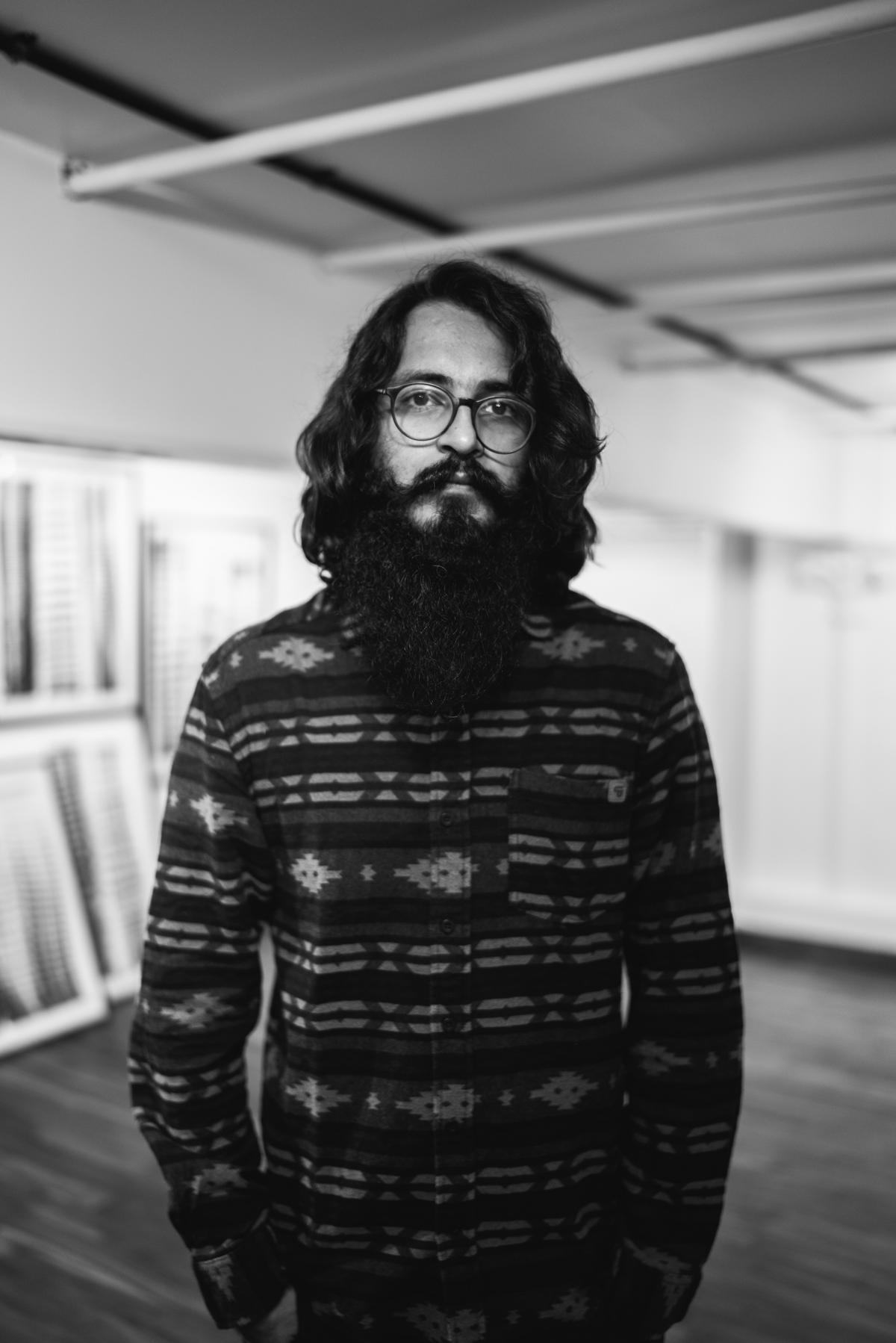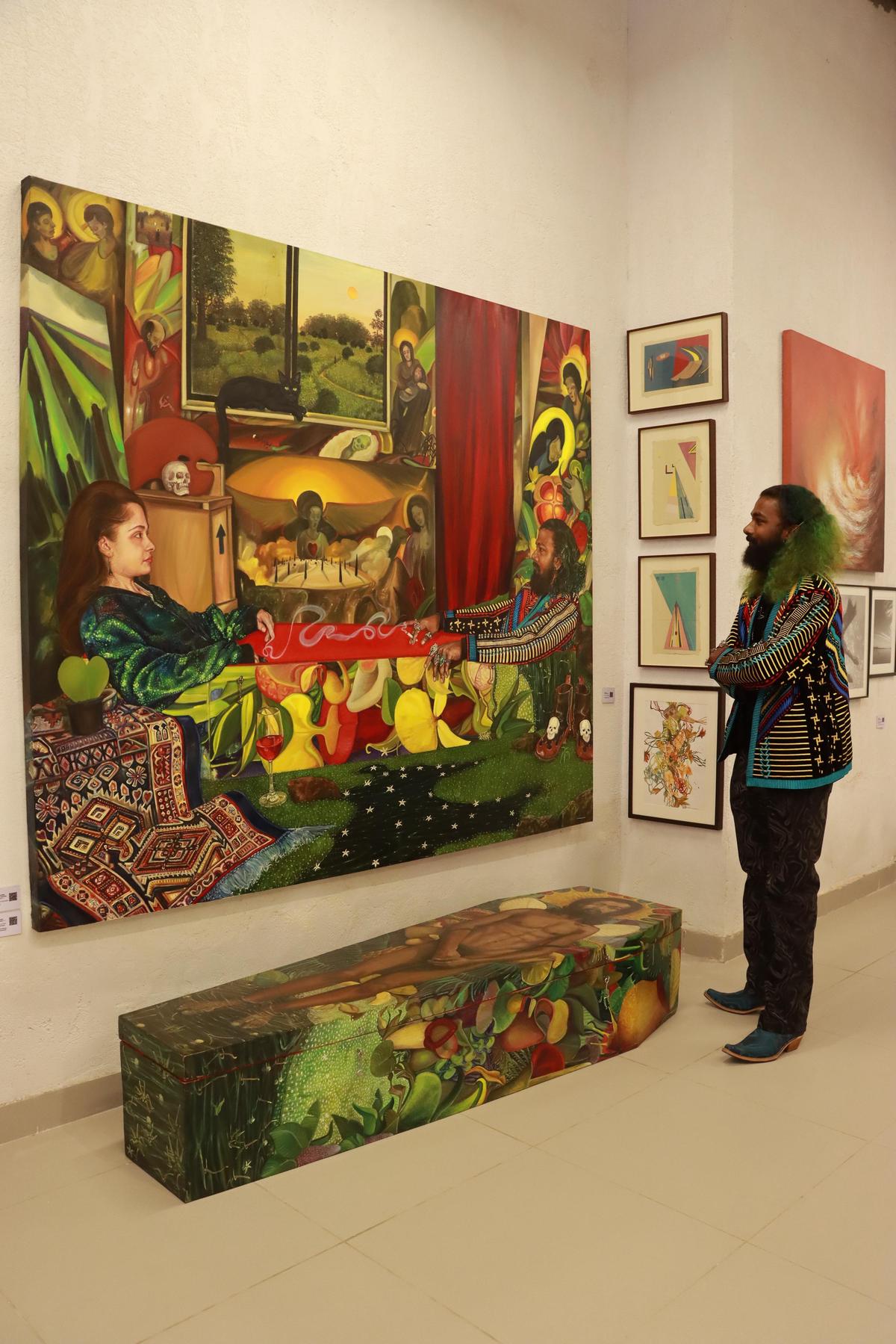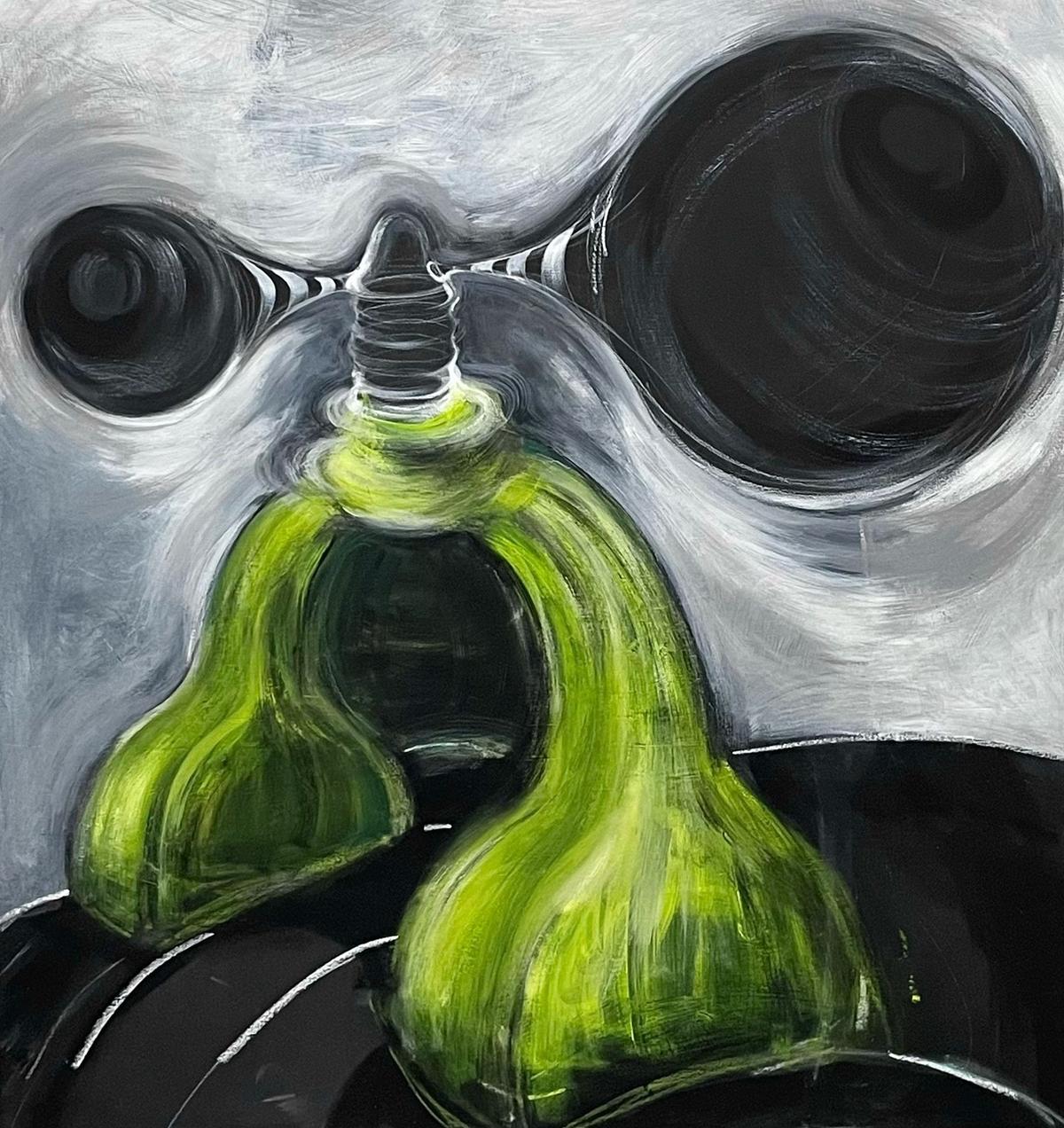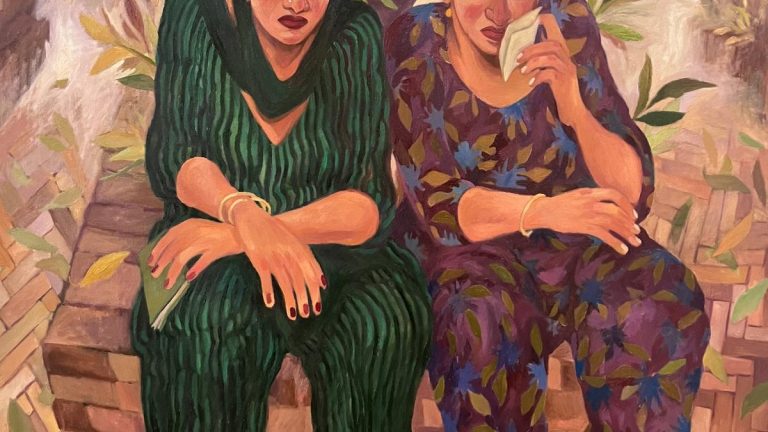
Last meeting by Aksh Diwan Garg
| Photo Credit: SPECIAL ARRANGEMENT
What’s a coffin doing in the middle of an art gallery? Or for that matter, a mirror that turns almost liquid and vibrates as you peer into it. Well, these two works are just two of the many things that don’t necessarily fit into neat categories at the newly-opened Method Delhi in Defence Colony as part of its inaugural exhibition, Fresh Produce 2025.
That is not to say that they don’t have works that do fit into specific categories — there are paintings, sculptures, installations as well as audio-visual works spread across the gallery located in the basement, but the voices are fresh and the perspectives push boundaries. Method has always stood for young and emerging voices, experimentation and a sort of risk-taking which is rarely seen in contemporary art.

Sahil Arora Founder and curator, Method
| Photo Credit:
SPECAIL ARRANGEMENT
For a fairly young art gallery – they recently turned five with two locations in Mumbai – to make a foray into Delhi’s art market is a bold move in itself. Sahil Arora, founder, Method, shares that he was not looking to open a gallery in the capital but the space compelled him to do so. “We have this great little space in Mumbai which works well for the exhibitions we do. Having said that, we want to do so much more but cannot because space is a limitation. Over here, we have the opportunity to do that,” he says.
Method also takes their responsibility towards building a gallery which is sustainable and mindful pretty seriously. To that end, they have tied up with Reformary, a research and design lab dedicated to building a sustainable and healthy material world. If the walls at the gallery look exposed and slightly busted, it is because they have been treated with bio-plasters and bio-cretes, which enhance indoor air quality and improve the overall built environment. “These choices reflect our shared commitment to creating spaces that prioritise environmental well-being while enabling artistic expression,” says Sahil.

Tito Stanley with his artworks at Fresh Produce exhibition at Method Art Gallery in Delhi
| Photo Credit:
SPECIAL ARRANGEMENT
The inaugural exhibition Fresh Produce 2025 fits right into this creative space. Curated by art historian and archaeologist Anica Mann as an India Art Fair Parallel, the exhibition reflects Method’s ethos of celebrating innovation and emerging talent. Over 30 artists — partly from an open call and some from Method’s roster who have not yet entered the commercial market, are part of the exhibition. While many of them have not graduated from art schools yet, their strong and consistent art practice caught the eye of the jury which consisted of Mann, Arora and Umah Jacob, director, External Relations and Outreach at India Art Fair.
While most artists are Indians, there is also Bangladeshi artist Pulak Sarkar, Japanese artist Kaito Sakuma and two Pakistani artists, Fatima Kaleem and Laiba Tanveer, — “a great win for us to get their works because it is very hard to showcase Pakistani artists here in India,” shares Anica.
Baroda-based Tito Stanley, whose self-portrait adorns the coffin , is perhaps the best known artist in the show. “For a commercial art gallery to bring a coffin into an exhibition is a hard sell, but at Method, we want to encourage artists to go beyond what is conventional. Institutions like ours will support their practice,” she states.

Astroboy by Sehaj Malik at Method Art Gallery
| Photo Credit:
SPECIAL ARRANGEMENT
Name a medium and chances are, you will find it at the exhibition. In Pulak Sarkar’s audio-visual artwork, words associated with the Gaza crisis scroll across a screen while Sehaj Malik painted a mural on one of the walls in a 12-hour durational performance. Tushar Waghela’s sculptural piece is an ode to herd mentality even as Fatim Kaleem and Payoja Agarwal’s works celebrate the feminine. In one of the more disturbing pieces, Ravi Morya’s artwork stands out for its depiction of domestic violence in what seems to be a mundane, everyday scenario. “We have been extremely inclusive when it comes to mediums. In terms of voices, we have everything from political art and to ecological art to feminist and masculine art,” adds Anica.
Apart from art, the gallery also has music programming every weekend. “We want to present different art forms and do things that may not necessarily fit into what an art gallery is expected to do,” Sahil signs off.
At Method Delhi Art Gallery, D-59 Defence Colony; Till March 16 (Mondays closed); .12pm to 7pm
Untitled sculpture by Adnan Kamal at Method Art Gallery in Delhi
| Photo Credit:
SPECIAL ARRANGEMENT
Published – February 27, 2025 10:20 pm IST

